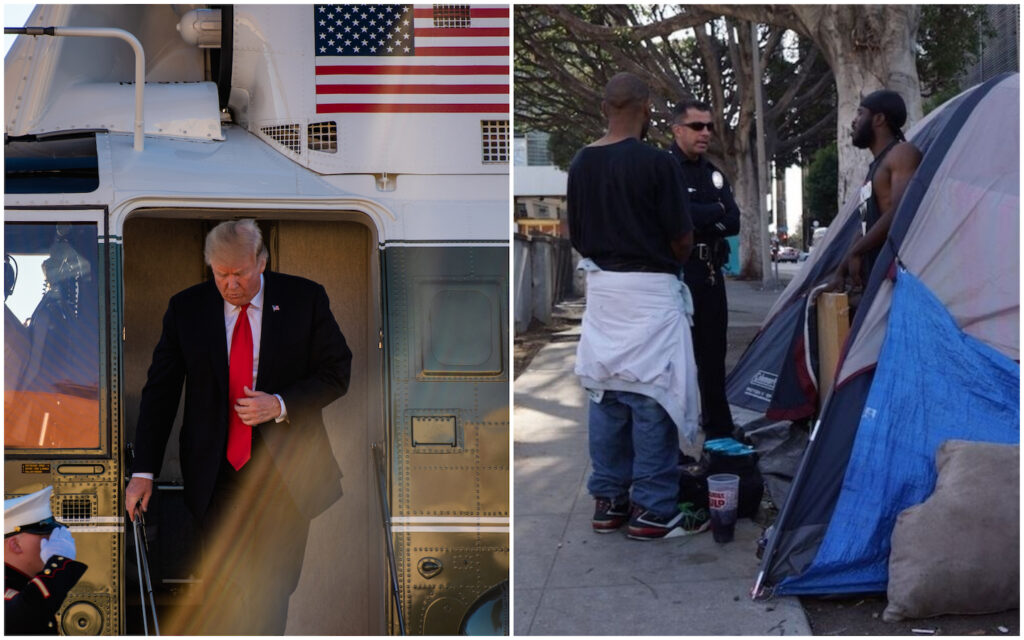A Controversial Approach to Trump Homeless Camps Policies

Introduction to Trump Homeless Camps Policies
The issue of homelessness is a complex and challenging one in the United States, affecting hundreds of thousands of individuals and families. During his presidency, Donald Trump’s approach to addressing homelessness garnered significant attention and controversy. In this article, we will delve into Trump’s homeless camp policies, their implications, and the broader context of homelessness in the United States.
The Rising Challenge of Homelessness
Before delving into Trump’s policies, it’s essential to understand the scope and nature of the homelessness crisis in the United States. Homelessness is a multifaceted issue driven by factors such as rising housing costs, unemployment, mental health challenges, and addiction. Individuals experiencing homelessness often face immense barriers to accessing stable housing, healthcare, and employment opportunities.
Trump’s Homeless Camp Policies

During his presidency, Donald Trump expressed deep concerns about homelessness in major cities, particularly in places like Los Angeles and San Francisco, where visible tent encampments and makeshift shelters had become increasingly common. His administration’s approach to addressing this issue was controversial and multifaceted:
- Federal Intervention: Trump’s administration considered federal intervention in cities struggling with homelessness. This intervention could involve clearing homeless encampments and relocating individuals to government-provided shelters.
- Deregulation: The Trump administration also aimed to reduce regulatory barriers to affordable housing construction. The belief was that by easing regulations, more housing units would be built, potentially alleviating the homelessness crisis.
- Funding Cuts: At times, the Trump administration threatened to cut federal funding to cities and states that did not take aggressive action to address homelessness. Critics argued that this approach would exacerbate the issue rather than solve it.
- Support for Transitional Housing: Some initiatives aimed to provide transitional housing for individuals experiencing homelessness. These programs were designed to help people transition from the streets to more stable housing situations.
- Mental Health and Substance Abuse Services: Efforts were made to increase access to mental health services and addiction treatment, recognizing that many individuals experiencing homelessness faced these challenges.
Critiques of Trump’s Approach
While the Trump administration’s efforts were intended to address the homelessness crisis, they were met with criticism from various quarters:

- Civil Rights Concerns: Clearing homeless encampments without providing adequate alternative shelter options raised concerns about the violation of civil rights, particularly the Eighth Amendment’s prohibition of cruel and unusual punishment.
- Short-Term Solutions: Critics argued that some of Trump’s initiatives, such as relocating homeless individuals or providing temporary shelter, did not address the root causes of homelessness, such as affordable housing shortages.
- Funding Cuts: Threatening to cut funding to cities facing homelessness challenges was seen as punitive and counterproductive, as these cities often required additional resources to tackle the issue effectively.
- Lack of Empathy: Some critics believed that Trump’s approach lacked empathy and understanding of the complexities faced by individuals experiencing homelessness, particularly those struggling with mental health and addiction issues.
The Broader Context of Homelessness

The homelessness crisis is a deeply rooted issue in the United States, predating any specific presidential administration. Solving homelessness requires a multifaceted approach that addresses root causes, including affordable housing, access to mental health and addiction treatment, and employment opportunities.
Conclusion on Trump Homeless Camps Policies
Donald Trump’s homeless camp policies drew attention to the ongoing homelessness crisis in the United States. While they aimed to address visible encampments and challenges faced by cities, they were met with significant controversy and critiques.
Ultimately, addressing homelessness requires a comprehensive, compassionate, and collaborative approach that spans local, state, and federal levels of government, as well as nonprofit organizations and communities. The issue of homelessness persists, highlighting the need for sustained efforts to find long-term solutions that provide individuals experiencing homelessness with the support they need to regain stability and dignity.